Most news headlines pertaining to the solar industry highlight growth projections and new capacity. Although you may see an occasional article about solar panel recycling, it’s rare to see articles about secondary market solutions.
What are secondary market solutions?
In brief, secondary market solutions address such issues as supply chain constraints, product leftovers from job sites or cancelled projects, system and equipment malfunctions, dealing with decommissioned material, and diverting panels from landfills.
The secondary market offers a wealth of business opportunities within the categories of PV repair, remanufacturing, resale, and recycling. This umbrella of solutions seeks to maximize asset and product lifecycles as well as accelerate the worldwide adoption of solar energy.
When these solutions are provided in a sustainable manner, the secondary market serves as one necessary element of the formula to achieve a circular economy within the solar industry.
This article features an interview with Moises Aguirre, Director of Business Development at Ontility, the solar division of TerrePower and a leading sustainable solutions provider in today’s secondary solar market. For the past decade, the company has excelled in PV equipment resale. Ontility’s success has led to the expansion of its Solar Lifecycle Solutions division to include remanufacturing and recycling. Ontility has been a member of EnergyBin since 2017.
EB: Ontility is a leader and top performer when it comes to secondary market solutions. Tell us about Ontility. How did the company get started?
Ontility was founded in 2009. Despite the recession of 2008, the U.S. solar industry grew as total capacity reached 0.34 gigawatts (GW). Recognizing this growing opportunity, we launched Ontility as a nimble PV product sourcing entity.
Fun Fact: Ontility was quickly recognized as the largest NABCEP (North American Board of Certified Energy Practitioners) exam provider in the country.
In 2016, N.F. Smith & Associates (est. 1984), the largest global independent distributor of electronic components and custom supply chain solutions, acquired Ontility as part of the company’s sustainability pursuits.
In 2019, Ontility facilitated the largest decommissioning project in the United States, which was 81 megawatts (MW).
Then in 2021, Smith divested its solar products division to TerrePower, the newly formed sustainability division of BBB Industries LLC. TerrePower specializes in the upcycling of solar panels and electric vehicle (EV) batteries. Our new parent company has committed considerable resources to developing proprietary equipment for remanufacturing solar panels and EV batteries.
In 2022, we expanded our second-life and end-of-life (EOL) solutions providing decommissioning, remanufacturing, and recycling services, all encompassed within the new Ontility service category: Solar Lifecycle Solutions.
EB: What is your professional background? What attracted you to solar and to Ontility?
I first came to work at N.F. Smith & Associates in 1998. For ten years, I worked in the divisions of Shipping, Receiving, Logistics, Information, and Telecommunications.
In 2009, I joined the team responsible for launching the Ontility Solar division. Shortly thereafter, I was given the opportunity to oversee Operations and Purchasing. Two years later, I transitioned into Sales.
When I started at Ontility, I didn’t know anything about solar other than that panels produce power. But once I became involved with the day-to-day and learned about the technology, I found myself more and more interested in solar and wanted to be part of the clean energy transition, which gives meaning to my everyday work.
EB: That’s great! We agree that the solar industry creates meaningful work. What is your life’s mantra, and how does it aid you in your role at Ontility?
Never stop learning and growing! Solar is a growing industry that’s ever-changing. I plan to grow and change with it.
EB: What does Ontility do well; what is the company’s niche?
We are lean and move quickly on opportunities and solutions for our clients.
For example, our years of experience, strong financial backing, and wide range of established manufacturer and supplier connections allows us to generally find and provide hard-to-find products for replacement purposes. Additionally, our expansion into panel and inverter remanufacturing and recycling makes us unique compared to most suppliers.
EB: That’s interesting. We’ll definitely want to hear more about your remanufacturing and recycling solutions. But first, let’s talk about how Ontility’s business model has shifted a number of times since the company was launched. You mentioned that the company has recently transitioned to new leadership under TerrePower, the sustainability division of BBB Industries. What are the driving forces that contributed to this change?
For nearly a decade and a half, Ontility has grown as a reliable PV system provider. Along our journey, we’ve endured changing governmental administrations and policies, as well as shifting economic and buyer trends.
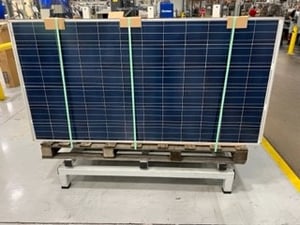 The transition to the TerrePower division has expanded our capabilities. We are now uniquely positioned to give new life to used, broken, and expired solar panels and inverters, and ultimately put product back into the market.
The transition to the TerrePower division has expanded our capabilities. We are now uniquely positioned to give new life to used, broken, and expired solar panels and inverters, and ultimately put product back into the market.
As the solar market has grown in all sectors – residential, commercial, and utility – domestically and internationally, various factors have contributed to Ontility’s evolution. Forgoing the effects of the pandemic, the overall international solar supply chain has expanded, governmental incentives are implemented all over the world, and social/commercial adoption of renewable energy is becoming more common.
Additionally, PV modules are commonly being re-classified as universal waste and in some parts of the world, designated as hazardous waste. These classifications increase the need for landfill diversion options. As new technology is introduced, along with federal and state incentives (such as the recent Inflation Reduction Act), the conditions are right, if not necessary.
While valuable materials may be recovered by recycling, many panels can be cleaned, repaired, reassembled, and reintroduced to the market. Whether the solution is repurposing, remanufacturing, or recycling, the industry can altogether avoid landfill disposal of aging panels.
EB: It’s amazing to hear you speak about the problem of aging panels as a business opportunity. We want to hear more about Ontility’s solutions. Before we go there, would you explain what’s happening in the decommissioning sector? What are you seeing out in the field with respect to materials flowing from decommissions?
We are seeing decommissioned product that was installed from as early as 7 years ago to beyond 10 years. In the residential and commercial sectors, two common scenarios are new roof installations and solar technology upgrades.
Another scenario is new asset ownership, where the new building- or land-owner no longer wants the system due to the age, aesthetics, or some other reason. Most of these modules are still producing power and in decent condition. Our testing regimen concludes that the modules we handle still have plenty of life left in them. We test every module we handle.
EB: You’ve seen modules coming offline as young as 7 years. We’ve seen modules as young as 1-5 years listed for resale on EnergyBin. There are a variety of reasons why this happens, which your team member, Alexandra Harrison, explained in the EB Insights webinar. One example she gave was an insurance claim that paid to replace an entire array, not just the damaged portion. How does Ontility step in and help with this situation and other decommissioning scenarios?
Our process is comprehensive. We take into consideration PV system planning, duration, remanufacturing, resale, and recycling, with the foundational purpose of landfill diversion.
In brief, we work with the client to thoroughly assess the project and establish a plan of action. We offer on-site inspection and module testing to guarantee the best possible solution for the decommissioned goods. We compose a proposal with the scope of services for the project and outline the client’s ROI.
Next, we coordinate on-site contacts and crew members to prepare the equipment for transport. We handle all logistics planning, including the scheduling of trucks and loading.
Once the material arrives at our facility, it is sorted for remanufacturing and recycling. Further, we provide the client with a certificate of disposition (COD), along with serial numbers and tracking numbers related to those modules that are recycled.
EB: Would you share a story about how Ontility helped a client manage a decommissioning project?
A few years ago, a hailstorm hit a client’s utility-scale solar array. The storm aftermath left 30,000 shattered modules in need of recycling and 220,000 salvageable modules in need of a new home.
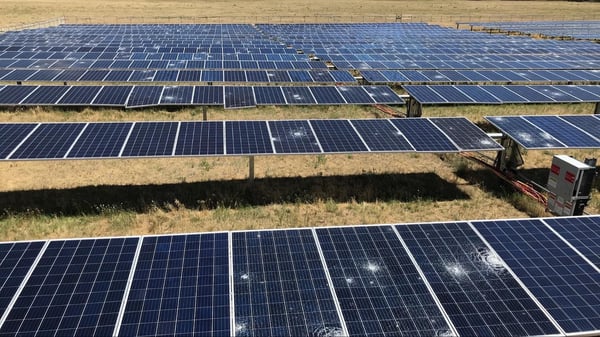 We were able to offer the client an all-in-one solution including the purchase of the salvageable modules. This transaction provided the client with additional funds to offset the cost to recycle the 30,000 modules.
We were able to offer the client an all-in-one solution including the purchase of the salvageable modules. This transaction provided the client with additional funds to offset the cost to recycle the 30,000 modules.
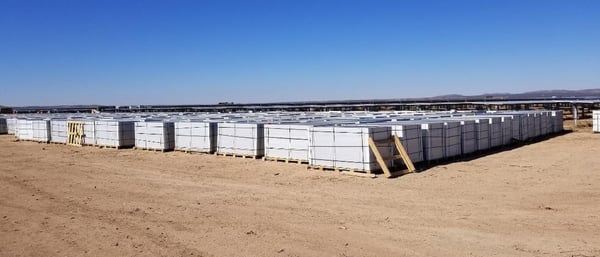 In this case, the client incurred no out-of-pocket cost for recycling. We provided onsite project management to help with quality control of inventory handling. We oversaw palletization and shipping. We worked with the site crews to keep the project on-time and cleared the site per the client’s preferred schedule.
In this case, the client incurred no out-of-pocket cost for recycling. We provided onsite project management to help with quality control of inventory handling. We oversaw palletization and shipping. We worked with the site crews to keep the project on-time and cleared the site per the client’s preferred schedule.
EB: That’s a great story! What tips do you have for solar companies and asset owners who are faced with upcoming decommissioning projects?
Perhaps the best advice I can give is to partner with a company that has the experience and backing to ensure your project runs smoothly.
Avoid a provider who is incapable of handling the project size, unable to purchase the salvageable modules, or unable to properly recycle damaged modules.
Don’t dismantle panels and throw them in the trash. If you do this, you’re likely throwing away money. Plus, we don’t want to see material going to the landfill when other feasible solutions exist.
Be mindful that there are many factors that play into the resale value of salvageable modules. At Ontility, we consider every project as a custom project. When appropriate project details and photos are provided, we can typically provide a purchase offer within 1-2 business days.
When you’re able to get a return on the decommissioned material, you can apply those funds towards the labor cost of the decommissioning or use the money to purchase other material you may need.
EB: Ontility’s approach to decommissioning projects sounds like one part of a holistic model for handling used PV material. Would you tell us more about Ontility’s remanufacturing and recycling solutions? Why has the company invested in remanufacturing and recycling?
Thanks to our connection with TerrePower, we’ve been able to expand what we can do with decommissioned material. We have the capability of sorting material on the project site or at our 200,000 square-foot sustainable, remanufacturing facility in Sparta, Tennessee.
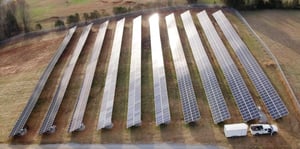 And we truly believe in solar as this facility’s power is produced by a 500-kilowatt solar and storage system constructed of remanufactured modules and second-life EV batteries onsite.
And we truly believe in solar as this facility’s power is produced by a 500-kilowatt solar and storage system constructed of remanufactured modules and second-life EV batteries onsite.
We repair both inverters and modules. I’ll walk you through the process for module handling, as modules comprise the bulk of the material we currently work with.
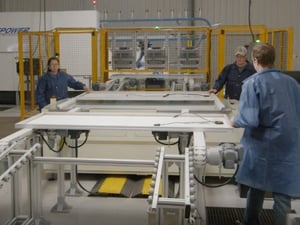 We begin by cleaning and testing modules. From there, the modules enter the remanufacturing stage. We’re able to repair or replace backsheets, connectors, j-boxes, and framing. In addition, we’re developing an efficient and feasible process to offer glass- and single cell-replacement in the future.
We begin by cleaning and testing modules. From there, the modules enter the remanufacturing stage. We’re able to repair or replace backsheets, connectors, j-boxes, and framing. In addition, we’re developing an efficient and feasible process to offer glass- and single cell-replacement in the future.
Those modules that are unsalvageable are sorted for recycling. We define recycling as a pure dissembling of the system to harvest and convert as much of the ‘waste’ back into reusable materials. Our focus is on driving the cost of recycling down to compete head-to-head with landfills.
Fundamentally, our reason for investing in remanufacturing and recycling flows from the all-too-real limitations of product lifecycles. Our goal is to maximize lifecycles of those products not yet at end-of-life as well as efficiently extract valuable materials from EOL products.
EB: How do you know Ontility will see an attractive return on investment as a result of your remanufacturing and recycling efforts?
As more and more solar systems go up every year, there is no denying the need for remanufacturing and recycling as viable landfill diversions. EOL planning should be integrated in lifespan planning for new systems.
What will we do with all the modules coming off sites due to decommissions, repowering, or claims?
We asked this question three years ago and answered it with our encompassing lifecycle solutions. We’re ready to take on the used module wave. Our investment leverages us to provide second-life modules to the global market as well as certified, traceable module recycling to the industry. We’re investing in the inevitability.
EB: These terms – repair, remanufacturing, resale, and recycling – are all pillars of the secondary market. In your professional opinion, why is the secondary market good for the solar industry?
The secondary market, also referred to as the aftermarket, has become distinctly relevant throughout recent years due to tariffs and supply chain challenges. In order to be truly environmentally conscious, we must exhaust every avenue possible to keep material in use and out of landfills. The secondary market provides this opportunity. Plus, it offers consumers who may not have the budget to purchase a new solar system, an alternative way to go solar and benefit from the cost savings.
EB: One constant secondary market strategy for your company has been your membership to EnergyBin. Ontility became a member in 2017. Why did Ontility join EnergyBin back then, and why are you still a member?
Ontility joined EnergyBin due to its well-known reputation within the Broker Exchange Network (EB’s parent company). EnergyBin is a unique and needed entity in the solar supply chain sector. Ontility stays abreast of panels and component sales via the EnergyBin exchange, and has incrementally expanded selling our panels on the platform. This dual purpose is complemented by strategic exposure to key audiences such as developers, EPCs, installers and O&M professionals within residential, commercial, and utility markets.
EB: To clarify for our readers, EnergyBin is an exclusive network for PV professionals who buy and sell solar equipment at the wholesale level. Why do you think it’s important for PV professionals to come together via the EnergyBin network?
EnergyBin provides the solar community with insight into the market and competitive pricing. It’s also a way to connect with sources that you may not have known existed as well as a means to readily review product availability.
EB: As we wrap up this interview, would you share with us your vision for a robust and sustainable secondary market? Where do you see Ontility in that vision?
A sustainable secondary market within the solar industry, in some ways, will mirror that of the secondary market in the automobile or IT hardware industries. A product would be salvaged and reworked once, twice, or maybe even three times if possible.
Once the EOL is reached, the reusable raw materials will be adequately recycled. The recycled materials will be used in all kinds of new products, including solar panels and components.
Ontility is committed to providing the full solar lifecycle solution package to our clients. We promise a seamless process via a single point-of-contact who will manage the project with a high-level of quality and within a timely manner.
A special thanks...
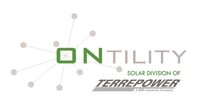 To Moises Aguirre for sharing your expertise on decommissioning projects as well as available options for used PV equipment via Ontility’s Solar Lifecycle Solutions.
To Moises Aguirre for sharing your expertise on decommissioning projects as well as available options for used PV equipment via Ontility’s Solar Lifecycle Solutions.
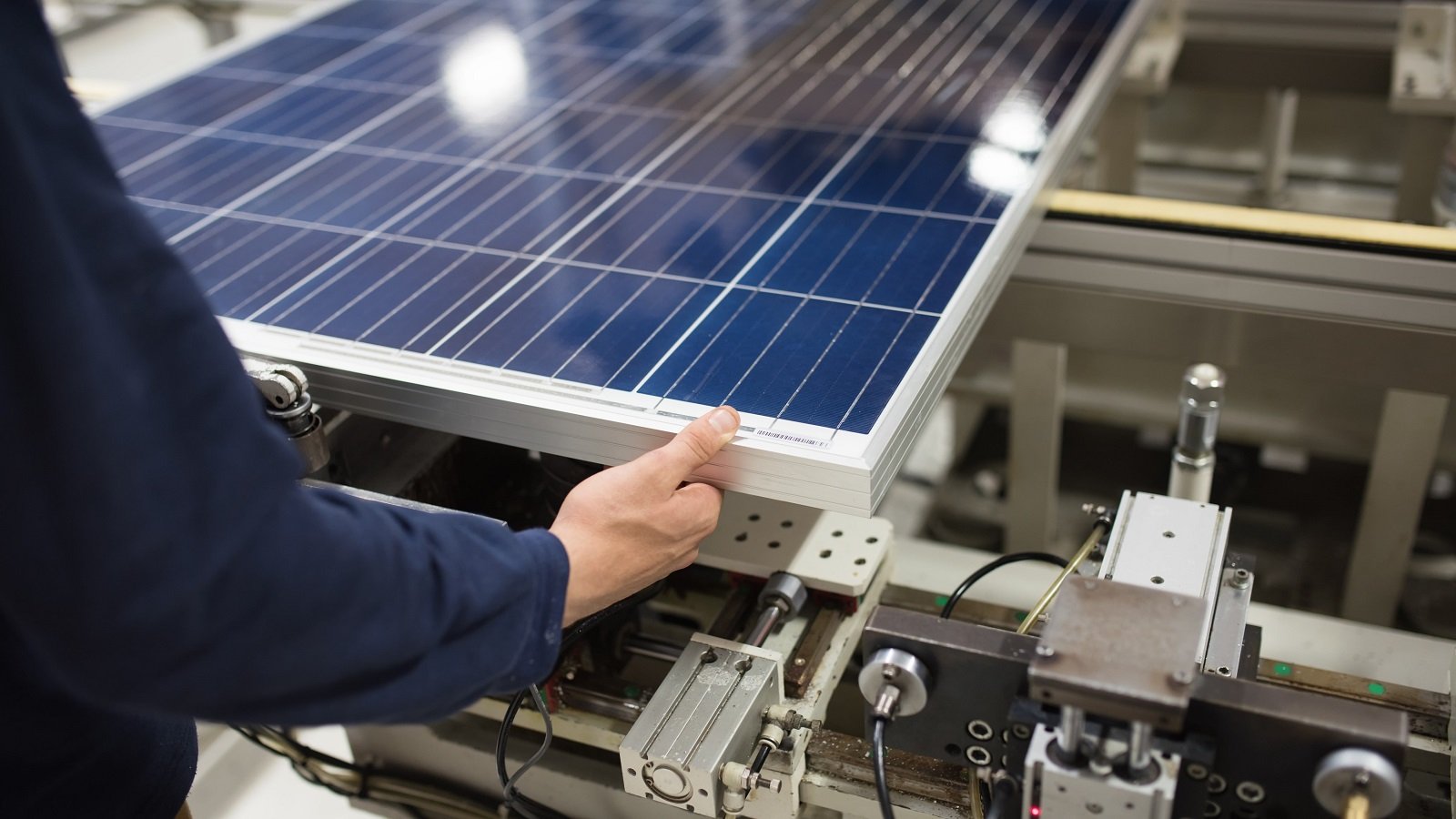

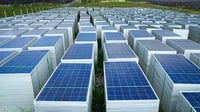 Secondhand: Used Solar Panels Help People and the Planet
Secondhand: Used Solar Panels Help People and the Planet A Comprehensive Guide to Wholesale Solar Equipment Brokering
A Comprehensive Guide to Wholesale Solar Equipment Brokering